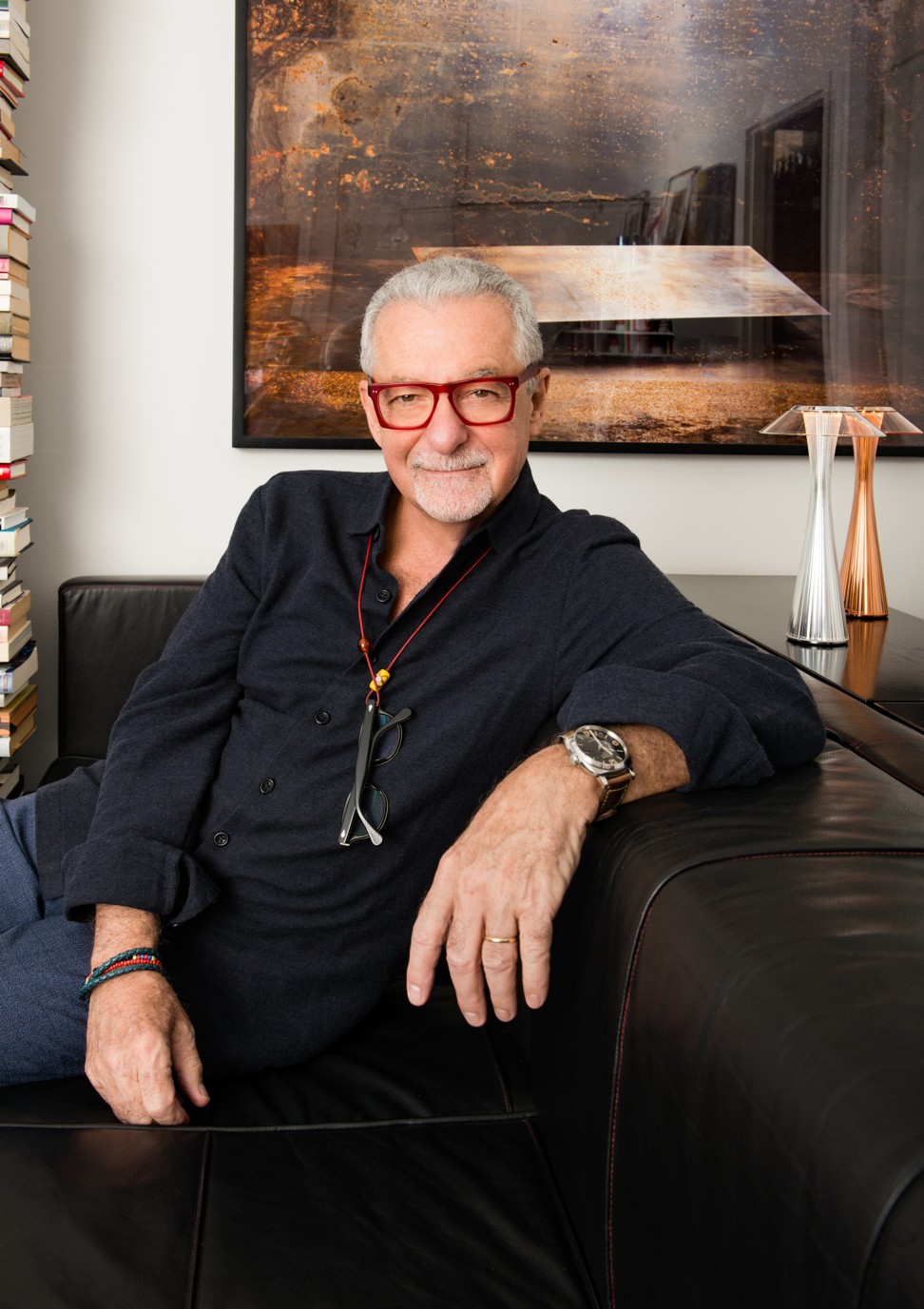
From Amber to Dinner by Heston Blumenthal, meet the godfather of restaurant design
- Adam D. Tihany describes himself as a ‘portrait artist’, creating unique restaurants designed around the chefs who run them
- The restaurant designer chews the fat about his career and how Richard Ekkebus persuaded him to transform Amber in Hong Kong
Were it not for his lack of ego, award-winning Israeli designer Adam D. Tihany, 71, would be more of a household name. He is credited with inventing the “restaurant design” profession in the 1980s and his client portfolio reads like a list of the greats of the hospitality industry.
He has designed numerous restaurant interiors, luxury cruise ships and five-star hotels, including work for the Mandarin Oriental Hyde Park in London, which recently underwent the most extensive revamp in its 117-year history. There, Tihany led the design of the spa, the Mandarin Bar, Dinner by Heston Blumenthal and Bar Boulud.

The pair had collaborated on its original design in 2004 and, with several Michelin stars and a slew of other international awards to its name, it still seemed to Tihany to be a much loved, beautiful and relevant fixture on Hong Kong’s dining scene. When Ekkebus explained the method behind his madness to his close friend, however, Tihany came round to his way of thinking.
“Richard wasn’t complaining about the ‘old’ Amber, but he felt he and his food had evolved. He wanted to transform the restaurant into a more contemporary, feminine kind of place that suited his new style of health-conscious and sustainable dining,” says Tihany, who also designed the adjacent wine bar, Somm.
Michelin-star restaurant Amber redefines French food with dairy-free menu as part of revamp
Unlike its more masculine predecessor, it features a softer, lighter and more personal look, combining sinuous forms with a fresh neutral palette. In place of the original Amber’s famous gold-rod lighting, magnificent bronze ring chandeliers draw attention to the ceiling height. But Tihany believes the decor serves purely as a backdrop to the food, which he likens to the main actor in a play.
“Everything I do complements the moment when you get your food,” he says. “The decor is like an antechamber to the actual dining experience; it is where you get your first level of expectation. If a restaurant can exceed those expectations when the food arrives, it will be a hit.”

Tihany prefers to collaborate with the individual chef he’s designing for and showcase that person’s vision rather than adopting a cookie-cutter approach and creating similar spaces that scream “Tihany design”. When you visit the restaurants he has worked on, he explains, they don’t look anything like each other.
“I’m like a portrait artist and my philosophy has always been that a restaurant at this level needs to be a portrait of the chef. It should represent his persona, creativity and brand – not mine,” Tihany says. “The restaurants [I have designed] reflect whoever operates them.”
Tihany says his whole career happened by default. After completing his military service in Israel, he wanted to study abroad. His parents weren’t wealthy enough to pay for him so he had to find a school that would accept Israeli students on a full scholarship – no mean feat without the internet to assist with research.

He found two faculties in Italy that funded foreign students. One was for veterinary medicine in Bologna; the other for architecture at the Politecnico in Milan.
“I knew nothing about architecture. All I knew was that I didn’t want to be a vet,” he says with a laugh.
From Milan, Tihany went to New York in 1975. The Italian school of thought at the time, as far as design was concerned, was that designers did everything – furniture, accessories, lighting and interiors. In the United States, though, people didn’t take him seriously for being a non-specific designer.

“You needed some kind of definition to be credible,” he says. “People didn’t trust you if you were unknown, but I refused to pigeon-hole myself.”
Thanks to a chance meeting with restaurateur Jean Denoyer at legendary nightclub Studio 54, that soon changed. Denoyer had the licence to bring French brasserie La Coupole to New York and he asked Tihany whether he would design the 225-seat space.
“I said, ‘Are you kidding? I’m starving – I’ll do anything!’” he recalls. “He was very hands-off so I did the space planning, the architecture, the lighting, the furniture, the menu, the uniform. I designed all of it.”

La Coupole opened in a snowstorm in February 1981, and when artist Andy Warhol couldn’t get in, the restaurant made headlines, becoming an instant hit. With his “Italian-ness” finally an asset, Tihany bought a sign calling himself restaurant designer and an industry was born.
“I’m like the history of restaurant design and hospitality,” he laughs. “You have to remember that at that time there were no television shows about food. There were two culinary schools in the whole of America and maybe a shelf of cookbooks in bookstores. I was the first person to design upscale restaurants and work with celebrity chefs when the term hadn’t even been coined. But I just happened to be in the right place at the right moment.”
